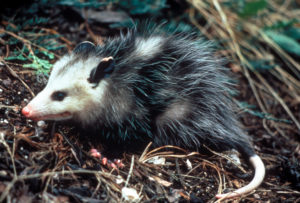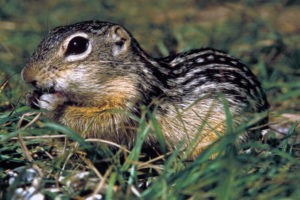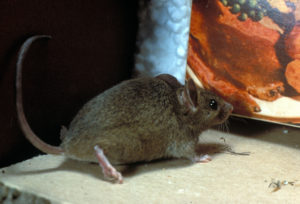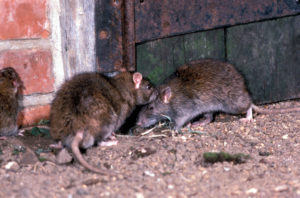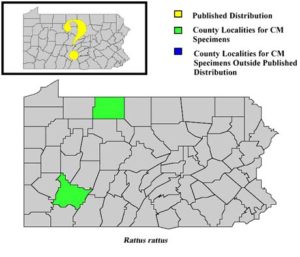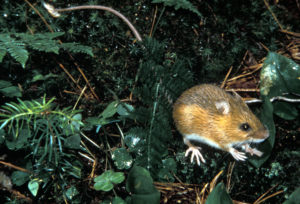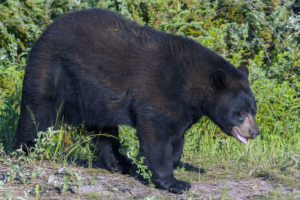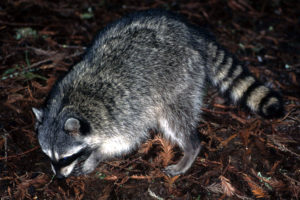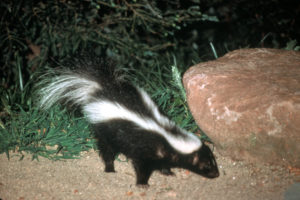North America’s only marsupial (female has a pouch) mammal. One of the shortest lived mammals for its size, typically 2 to 4 years. Killed by many predators: humans (and cars), dogs, cats, owls, and larger wildlife.
Plants and meat
Thirteen-lined Ground Squirrel (Ictidomys tridecemlineatus)
Not native to Pennsylvania, this species was introduced when a pair escaped from captivity in 1919 around Polk, Venango County. By the time of the Pennsylvania Mammal Survey (1947–1952), scattered colonies existed in western Venango and northeastern Mercer counties. They were not known to have crossed any rivers, therefore distribution seems to be bounded on the north by French Creek, the south by Sandy Creek, and the east by the Allegheny River.
House Mouse (Mus musculus)
This Old World rodent is the common pest found living in houses, barns, and other human habitations. It arrived in the New World as a stowaway on board ship and has lived successfully around people for centuries.
Norway Rat (Rattus norvegicus)
This animal is a good swimmer and climber whose opportunistic behavior has led to its successful worldwide distribution. This Old World rodent did not originate in Norway but in China. It is a serious pest of granaries and other food storage sites and a vector of numerous diseases communicable to humans. Most sources state strongly that efforts should be taken to control of Norway rat populations whenever possible.
Black Rat (Rattus rattus)
This species is thought to have been extirpated from (forced out of) the Commonwealth by pressure from the more aggressive Norway rat. Although some individuals may continue to find their way to coastal seaports such as Philadelphia via incoming ships, it is unlikely that populations will be successfully re-established.
Woodland Jumping Mouse (Napaeozapus insignis)
A long tail and powerful hind legs provide this Pennsylvania native with the ability to jump six to eight feet when avoiding a predator. Its closest relative is the meadow jumping mouse and both are true hibernators.
Black Bear (Ursus americanus)
The black bear is not a true hibernator like the woodchuck. Although it goes through a period of dormancy, it does not lower its respiration, heart rate, or body temperature in the manner that defines true hibernation.
Raccoon (Procyon lotor)
Raccoons are highly adaptable and have become quite accustomed to life around people. During the last decade, its association with rabies in the Commonwealth has made it a less favored neighbor than might otherwise be the case.
Striped Skunk (Mephitis mephitis)
Valued for its fur, the skunk is also an important predator of rodents and insects.

